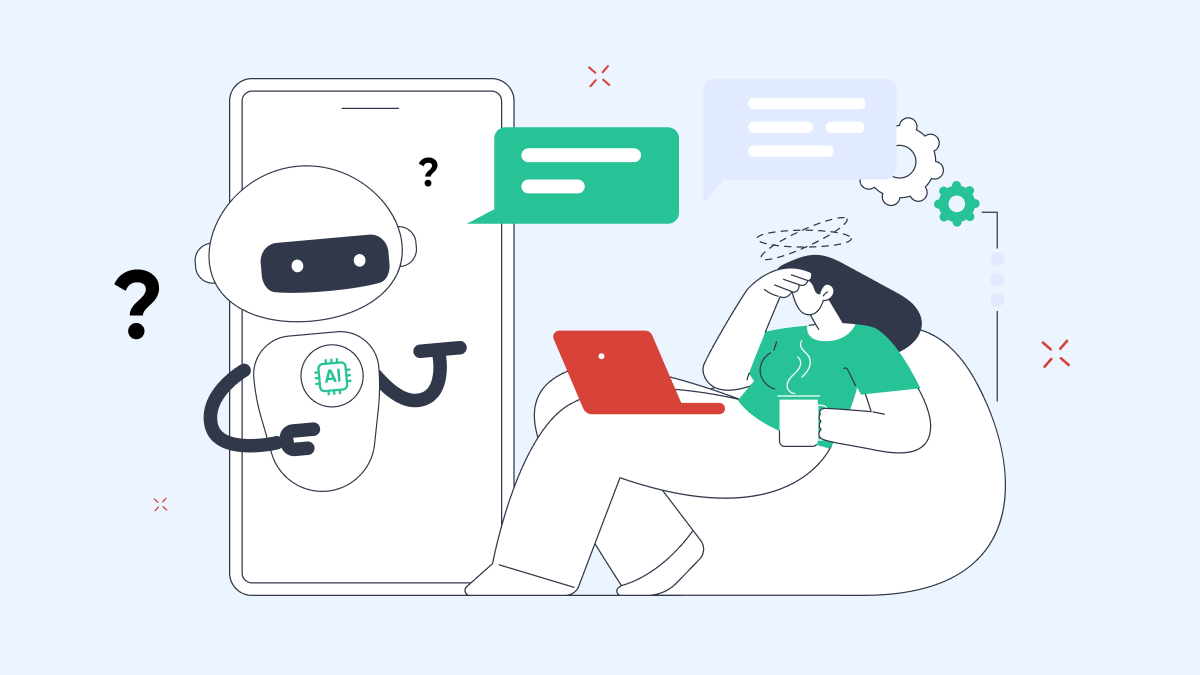.png)
Not All AI Is Good AI
Not all AI is created equal. Learn how to identify which tools are driving performance and which ones are just adding noise.
.svg)

AI isn’t automatically valuable.
The fact that something uses artificial intelligence doesn’t mean it will deliver better results for your business. In reality, most AI tools fall into two categories: those that create real impact and those that create more noise.
The difference comes down to intent, design, and execution.
Let’s break it down.
What Makes “Good AI” in Business?
1. It saves time and money.
Good AI automates repetitive tasks and reduces manual work — without needing constant supervision. For example, a good AI review response tool will handle 80% of your incoming feedback, freeing up your team to focus on high-priority customer issues.
2. It drives measurable outcomes.
Whether it’s higher CSAT scores, faster ticket resolution, or increased upsell rates, good AI ties directly to performance metrics you already care about.
3. It integrates with your systems.
If your AI can’t access customer history, inventory, or sales data, it’s guessing. Good AI works with your stack, not around it.
4. It gets better over time.
The best AI tools are self-learning. That means fewer rules to manage and smarter suggestions as usage grows.
What Bad AI Looks Like
1. It creates more work than it saves.
If your team has to constantly review or re-do what AI creates, it’s not helping. It’s slowing you down.
2. It makes inaccurate or tone-deaf decisions.
Bad AI lacks context. It might suggest irrelevant upsells, respond inappropriately to reviews, or misinterpret customer sentiment.
3. It’s a black box.
If you can’t understand how it works or what it's doing, you can’t trust it. And if your frontline team doesn’t trust it, they won’t use it.
4. It doesn’t adapt.
Static rule-based AI doesn’t improve over time. You end up having to manually retrain it or abandon it altogether.
Real-World Example: Voice AI in Drive-Thrus
- Good AI: Tools like Presto and SoundHound consistently outperform humans in speed, accuracy, and upsell rate. They pull in order history, customize menus by time of day, and learn with every transaction.
- Bad AI: Generic voice assistants with no contextual awareness often mishear customers, make mistakes, and increase frustration — especially if they can’t escalate to a human.
How to Choose the Right AI
Ask yourself:
- Does this reduce workload or just shift it around?
- Can I tie this tool to a clear outcome (speed, revenue, retention, accuracy)?
- Will my team actually use it — and trust it?
- Does it plug into the tools we already use?
If the answer to most of those is yes, you’re likely looking at a solid AI investment.
The Bottom Line
AI isn’t good or bad on its own. It’s about what it enables.
Look past the hype. Focus on systems that make your operations faster, smarter, and more profitable.
Because the businesses that thrive in the AI era will be the ones who use it to do what they already do — only better.

.webp)